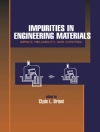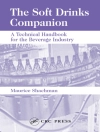The use of polymers is restricted by their flammability – they may indeed initiate or propagate fire. Fire Retardancy of Polymers focuses on mineral additives from either micro- or nano-composites for application in fire retardants. With the use of fire retardant additives containing halogen or phosphorus compounds in decline, the need for other systems is evident. The major materials that are used are alumina trihydrate or magnesium hydroxide which account for more than 50% by weight of the world-wide sales of fire retardants. Recent works have shown that such halogen-free compounds may give enhanced fire retardancy to polymeric materials when used in low levels, alone, or in synergistic mixtures. The corresponding fire performance depends on the dispersion of the mineral filler, with micrometer-scale dispersion leading to the best performances. Specialists discuss these new applications of mineral fillers with particular emphasis on action mechanisms, new materials including textiles, toxicology and hazards. With extensive references, this book provides a comprehensive and up-to-date view of these applications. This book will appeal to professionals, materials scientists and engineers looking for novel ways to eliminate fire hazards and improve flame retardancy of materials, with a special interest in sustainable development.
Tabla de materias
Front matter and contents;
General Considerations on the Use of Fillers and Nanocomposites. An Introduction to the Use of Fillers and Nanocomposites in Fire Retardancy;
Micro-sized Fire Retardant Fillers. Fire Retardant Fillers for Polymers;
Lamellar Double Hydroxides/Polymer Composites: A New Class of Fire Retardant Materials;
Effect of a Small Amount of Flame Retardant on the Combustion of PC, PBT and PET;
Intumescent Silicates: Synthesis, Characterization and Fire Protective Effect;
Use of Nanocomposite Materials: Flammability of Nanocomposites: Effects of the Shape of Nanoparticles;
Thermal Degradation and Combustibility of Polypropylene Filled with Magnesium Hydroxide Micro-Filler and Polypropylene Nano-Filled Aluminosilicate Composite;
Effect of the Processing Conditions on the Fire Retardant and Thermomechanical Properties of PP – Clay Nanocomposites;
Fire Retardancy of Polystyrene – Hectorite Nanocomposites;
Pyrolysis and Flammability of Polyurethane – Organophilic Clay Nanocomposite;
Thermal Degradation Behaviour of Flame-Retardant Unsaturated Polyester Resins Incorporating Functionalised Nanoclays;
Comparative Study of Nanoeffect on Fire Retardancy of Polymer – Graphite Oxide Nanocomposites;
Styrene – Acrylonitrile Copolymer Montmorillonite Nanocomposite: Processing, Characterization and Flammability;
Micro-Sized Fire Retarding Mineral Fillers. Polyhedral Oligomeric Silsesquioxanes: Application to Flame Retardant Textiles;
Octaisobutyl POSS Thermal Degradation;
Mineral Fillers in Synergistic Systems. Interactions between Nanoclays and Flame Retardant Additives in Polyamide 6 and Polyamide 6.6 Films;
Use of Clay – Nanocomposite Matrixes in Fire Retardant Polyolefin-Based Intumescent Systems;
Effect of Hydroxides on Fire Retardance Mechanism of Intumescent EVA composition;
Barrier Effects for the Fire Retardancy of Polymers;
Plasma Assisted Process for Fire Properties Improvement of Polyamide and Clay Nanocomposite Reinforced Polyamide: A Scale-up Study;
Fire Retardant Polypropylene / Flax Blends: Use of Hydroxides;
Intumescence in Ethylene-vinyl Acetate Copolymer Filled with Magnesium Hydroxide and Organoclays;
Spent Oil Refinery Catalyst: A Synergistic Agent in Intumescent Formulations for Polyethylenic Materials;
Zinc Borates as Synergists for Flame Retarded Polymers;
Fire Retardancy of Engineering Polymer Composites;
Flame Retardant Mechanisms Facilitating Safety in Transportation;
Effect of the Addition of Mineral Fillers and Additives on the Toxicity of Fire Effluents from Polymers. Comparison of the Degradation Products of Polyurethane and Polyurethane – Organophilic Clay Nanocomposite – A Toxicological Approach;
Mechanisms of Smoke and CO Suppression from EVA Composites;
Products of Incomplete Combustion from Fire Studies in the Purser Furnace;
Improved and Cost-Efficient Brominated Fire Retardant Systems for Plastics and Textiles by Reducing or Eliminating Antimony Trioxide;
Subject Index












